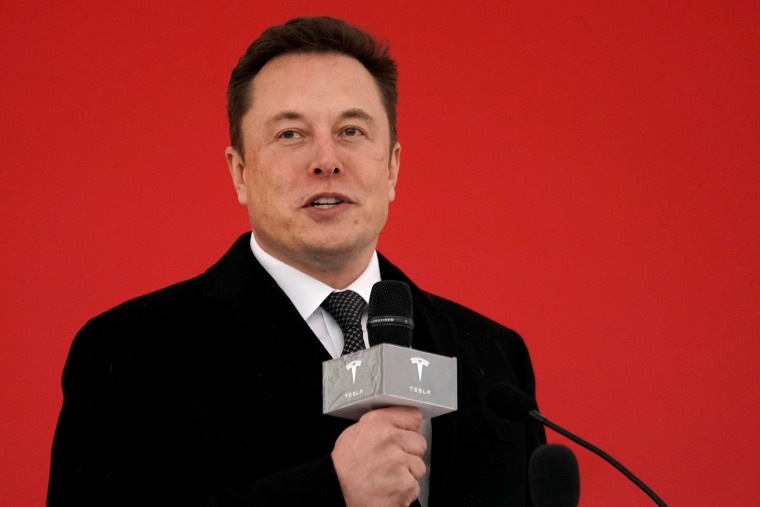Tesla Chief Executive Officer Elon Musk said that the company should have robotaxis on the roads in 2020.
“I feel very confident predicting autonomous robotaxis for Tesla next year,” Musk said on stage at the Tesla Autonomy Investor Day in Palo Alto, California. They won’t be “in all jurisdictions, because we won’t have regulatory approval everywhere, but I am confident we will have at least regulatory approval somewhere, literally next year,” he said.
Musk based his optimism on the amount of data his company is able to gather from Tesla vehicles already on the road today, which it then uses to improve its software.
All Tesla cars being produced today have the hardware on board that’s required for full self-driving, Musk said, promising that, “all you need to do is improve the software.”
Musk also predicted that in two years, Tesla will be making cars with no steering wheels or pedals.
While Tesla will have over 1 million robotaxis on the road next year, said Musk, while adding that he expected the company to be “operating robotaxis next year with no one in them.”
He did also warn investors, “Sometimes I am not on time, but I get it done.”
In the past, Elon Musk’s forecasts for Tesla have missed the mark. Tesla was two years late with the launch of the Model X, its first all-electric SUV. And it was two years late in delivering semi-autonomous features to eager drivers. When Tesla began to discuss its ambitions in self-driving technology in 2016, Musk said they would conduct a hands-free trip across the U.S. by late 2017. They have yet to complete that mission.
Currently, Tesla offers Autopilot — an advanced driver assistance system — as a standard feature in its cars. According to the company’s website, Autopilot can automatically hold a car in its lane and accelerate or brake automatically, for example, in response to pedestrians or other cars in its way. Tesla can improve Autopilot with new features (or bug fixes) over time via over-the-air updates, as well.
In addition, Tesla sells a “Full Self-Driving,” or FSD, package for its vehicles for $5,000 or more if the software is installed after the vehicle is initially purchased.
FSD features today include “Summon,” which lets a driver call their Tesla to roll out from a parking spot to where they are standing (with no driver on board). And FSD lets drivers “Navigate on Autopilot,” automatically driving their car from a highway on-ramp to an off-ramp, making necessary lane changes along the way.
Later this year, Tesla’s website says, cars with FSD should be able to read and respond properly to traffic lights and stop signs, and drive automatically on city streets.
Even with FSD, Tesla’s cars are not considered “driverless,” meaning that they don’t meet the SAE Level 4 standard used to denote a car that could handle every aspect of driving in some conditions without any human intervention.
Tesla also cautions its drivers, “Current Autopilot features require active driver supervision and do not make the vehicle autonomous.” In other words, while tempting, drivers aren’t supposed to zone out, or drive hands-free even if they have Full Self-Driving.
